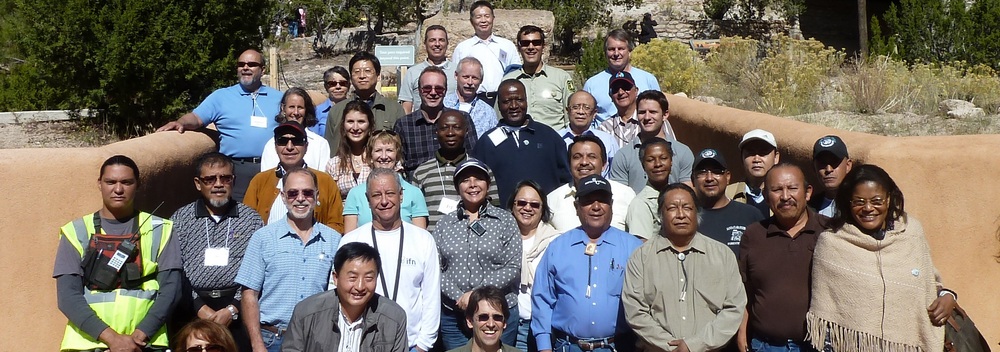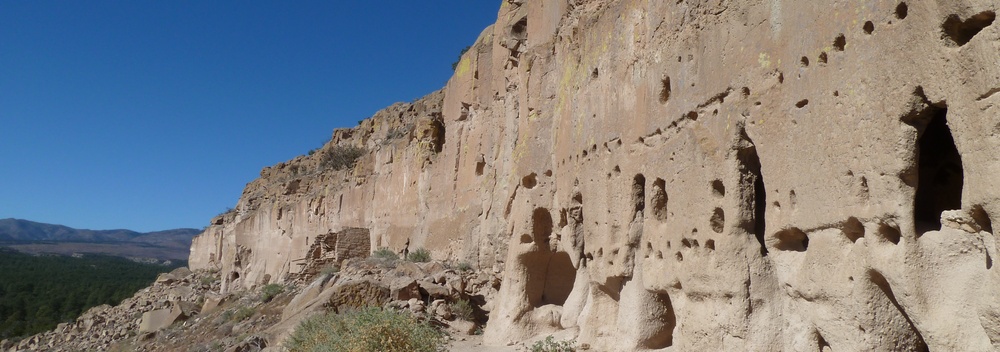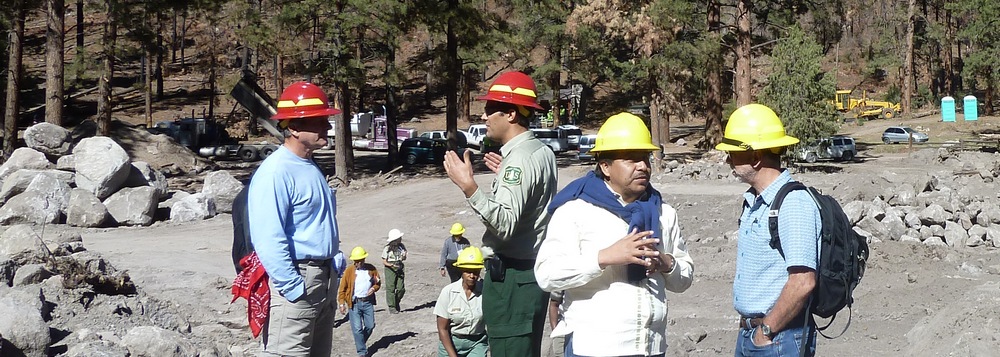Forest Governance in the 21st Century: Resilient Forest Communities, Landscapes and Agencies
The seventh meeting of MegaFlorestais was held on October 22-25, 2012, and co-hosted by the United States Forest Service, in cooperation with the Rights and Resources Initiative. Twenty-one delegates came from eight countries: Brazil, Cameroon, Canada, China, Indonesia, Mexico, Peru, and the USA.
The meeting in Santa Fe continued MegaFlorestais’ focus on forest tenure and governance, policy and regulations, and the changing roles of forest agencies in today’s economic environment – issues that are particularly critical today because of the increased attention being paid to forests in the global discussions on resource scarcity and climate change. In addition, the meeting discussed transitions in the global forest industry, and how agencies are responding to ensure that their domestic industries continue to contribute to rural development, as well as climate change and the role of forest agencies in addressing this critical global challenge.
Topics discussed
- Market and climate trends affecting forests globally;
- Concerns, positions and plans of local peoples and the forest industry;
- Innovative approaches to climate resiliency and restoration across ownerships & landscapes, how to deal with the effects of wildfires;
- Community management of natural resources, specifically looking at the forest management of the Santa Clara Pueblo and New Mexico’s acequias; and
- Strengthening forest agencies: changing roles & transforming bureaucracies to improve impact.
Field trip: Community forest management – Visit to the Santa Clara Pueblo
The group went to Santa Clara Pueblo in the Jemez Mountains where they were welcomed by the Governor of the Pueblo, Walter Dasheno. Santa Clara Pueblo was the first Pueblo in the Southwest region to obtain the right to self-governance in the 1990s: they are now managing their natural resources and created a forest management department. They have set high quality standards to ensure water quality and are conducting activities on forest restoration, fuel reduction, fire suppression, disease management and wildlife protection. They are working in close collaboration with the federal and state governments, local authorities and pueblos to build their technical capacity and have an impact at the landscape level.
Unfortunately, several major fires and flash floods occurred in the last decade and are leaving their marks on the landscape. In 2011, 15.5 thousand acres (~6 thousand hectares) burned in the Las Conchas Fire (which started in the nearby state forest) and badly damaged the Santa Clara watershed. The group visited the devastating impact of the fire on the watershed. This fire affected much of the traditional hunting and gathering, as well as cultural and spiritual sites on the pueblo. MegaFlorestais leaders were impressed by the Pueblo governance system, the way they are managing the forests, and how they faced adversity. In particular, the group was impressed by the generous and expansive approach taken by the tribal members towards the US Forest Service, where the fire started. Despite the impacts to their way of life, the tribe continues to work collaboratively with all of their partners, including the US Forest Service.
Resources
Synopsis (including the agenda and list of participants)
Presentations
- Don Roberts – Three Reasons the Demand for Timber is Rising
- Avrim Lazar – Geopolitical Shits Affecting Forests, Communities, Industry & Trade
- Vicky Tauli-Corpuz – Global Perspectives of Indigenous Peoples
- Sandy Hurlocker and Laura McCarthy – Innovative Approaches to Climate Resiliency and Restoration Across Ownerships and Landscapes
- Andy White – Update on Forest Tenure
- Corbin Newman – Restoring Southwestern Forests: A 21st Century Challenge
- Dr. Juan Manuel Torres Rojo – Restoration and Poverty Alleviation Across Landscapes and Communities
- Leslie Weldon – Changing Composition and Culture: Transforming a Forest Organization



